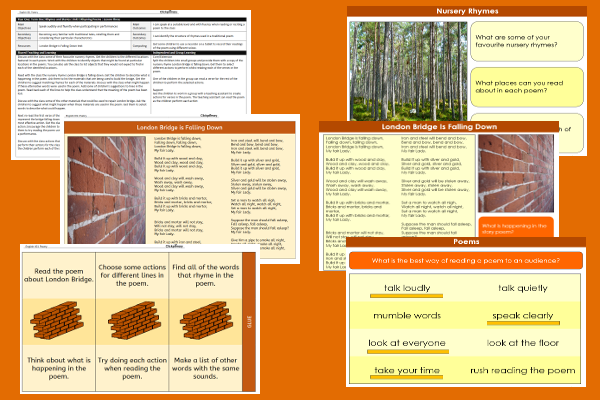Lesson Three – London Bridge Actions

This English teaching pack for Key Stage One gets the children to select and perform actions to accompany lines from a traditional nursery poem to illustrate characters, places and events.
The class can identify and model how to speak with fluency and clarity when reading a nursery rhyme poem aloud to the class using the correct tones, volumes and expression.
Download this teaching pack including a lesson plan, classroom activities and an interactive presentation to teach the children to select and perform actions to accompany lines from a traditional nursery poem to illustrate characters, places and events
Activities in this teaching pack include a shared reading text to explore the content structure and rhyming vocabulary in a nursery rhyme and a table display card to follow a set of steps to prepare a poem for a performance using matching actions and voice expressions.
The interactive presentation gets the children to investigate the nursery rhyme of London Bridge is Falling Down and the matching vocabulary rhyming words used in the poem and model how to read the poem aloud to an audience with fluency and clarity.
This lesson is part of a English scheme of work to get the children to explore the vocabulary and structure of a range of narrative and traditional poems, identify and spell words with the vowel digraphs ee and oo and match sets of rhyming words. There are teaching activities for shared learning, differentiated worksheets to support independent learning and interactive presentations to introduce concepts and key skills.
-

Counting Twenty
Explore how to model and illustrate ways of counting different numbers of objects and pictures with matching sums to twenty
-

Alphabet Lists
Practise building lists of objects that have been recorded in alphabetical order to match different themes and topics
-

Garden Flowers
Develop and refine skills in representing different types of flowers grown in a garden by using a range of painting techniques
-

Equal Groups
Explore and record how to divide numbers of different groups of things into matching equal groups of two, three and four
